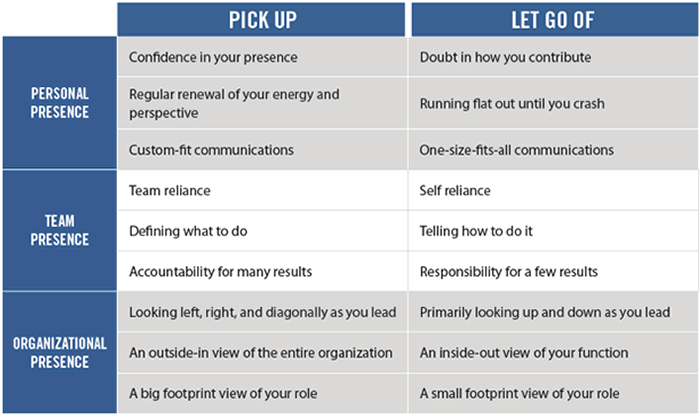How Strong is Your Leadership Pyramid?
This post is adapted from the forthcoming third edition of my book, The Next Level: What Insiders Know About Executive Success. Available in October, you can pre-order it here.
Research shows that moving to the executive level is among the toughest transitions of any career. For example, a study conducted by the Center for Creative Leadership shows that 40 percent of new executives fail within eighteen months of being named to their positions. What’s going on here? Is it a case of the Peter Principle at work? Have 40 percent of all new executives simply risen to their level of incompetence? That seems unlikely. After all, to get to the executive level, you usually have to be pretty smart, accomplished, and competent. How do we explain the sudden increase in the failure rate when leaders move into next level roles?
Let’s look first at expectations. Based on my experience as an executive and coach in Fortune 500 corporations and large government agencies, I know that the expectations of performance for executives are very high. I also know that they are very rarely explicitly stated. Unfortunately, much of the time the only expectation that is shared with new executives is that they are to figure out what to do and how to do it. In an effort to make the implicit more explicit, I have identified nine sets of key behaviors and beliefs that executives need to pick up and let go of to succeed. These sets of behaviors break down into three primary components of executive presence: personal presence, team presence and organizational presence. The Next Level model of executive presence is summarized in this table:

The process of picking up and letting go, I’ve learned, is central to succeeding at the next level. Succeeding at the next level extends beyond just being promoted; it also applies when executives find themselves leading in any situation where, for internal or external reasons, the results expectations have changed.
In working with executives in the 8 years since the second edition of The Next Level was released, I’ve identified three key imperatives in Personal, Team and Organizational Presence that executives need to master to be successful at the next level:
- For Personal Presence, the imperative is to manage yourself by regularly reflecting on where you are and preparing for what’s next.
- For Team Presence, the imperative is to leverage your team by shifting how you use your time and attention and coaching your team members to succeed in bigger roles.
- For Organizational Presence, the imperative is to engage your colleagues by collaborating with them to get bigger things done while contributing your grounded point of view.
I’ve come to think of those three leadership imperatives – manage yourself, leverage your team, engage your colleagues – as layers of a pyramid in which one layer is the prerequisite to the next.
Managing yourself is at the base of the pyramid. I’ve been saying for a couple of years now that if you want to lead at your best, you have to live at your best. As I’ve written here before, because of the pressure of a seemingly 24/7 operating environment, too many leaders are living in a chronic state of fight or flight. Establishing a sustainable life rhythm is at the heart of managing yourself effectively. If you’re not doing that well, you won’t be able to operate at your best in the other aspects of your leadership role.
Leveraging your team is the next layer of the pyramid. Most leaders have gotten where they are because they’ve developed the reputation of being the “go-to person.” They’re known for getting things done. I like to joke that being a go-to person is a great thing to be until it’s no longer a great thing to be. That’s when the scope of the job becomes too big to continue to operate as the hero or heroine. If leaders don’t leverage their teams, they eventually fail. The key is to make the shift from being the go-to person to the person who creates and leads teams of go-to people.
Engaging your colleagues is the top layer of the pyramid because that’s where most of the marginal value is created. By looking left, right and diagonally and not just up and down, the most effective leaders work with their colleagues to create outcomes that they and their teams cannot create by themselves. That requires developing a business first, function second mindset. It also requires enough mental bandwidth to look down the road and around corners to uncover previously hidden opportunities. Successful leaders create that bandwidth by leveraging their teams and managing themselves effectively.
Manage yourself. Leverage your team. Engage your colleagues. Doing the first sets you up to do the second. Doing the second paves the way for the third. Collectively, they roll up to successful leadership. How strong is your leadership pyramid? What’s your biggest opportunity to make it stronger?
If you liked what you read here, subscribe here to get my latest ideas on how to lead and live at your best.